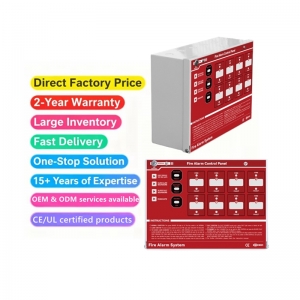The Ultimate Guide to Combination CO & Gas Detectors: Safety Made Simple
Invisible dangers like carbon monoxide (CO) and explosive gases threaten homes silently. A combination CO & gas detector is your first line of defense. This guide unpacks everything you need to know – from choosing the right device to maximizing its lifesaving potential.
Why You Need a Combination Detector
Dual-Threat Protection
Monitors both CO and combustible gases (methane, propane) simultaneously.
Eliminates the cost and clutter of separate devices.
Critical for homes with gas appliances, fireplaces, or attached garages3.
Smart Sensor Technology
Electrochemical CO sensors offer 90%+ accuracy.
Semiconductor sensors detect explosive gases at ppm levels.
Audible alarms (85dB+) + LED strobe alerts for hearing-impaired users.
Top 3 Features to Prioritize
✅ Battery Backup
Ensures functionality during power outages (Opt for 10-year sealed lithium batteries).
✅ Digital Display
Real-time gas concentration readings (e.g., "CO: 35 PPM") help identify slow leaks.
✅ Interconnectivity
Link multiple detectors so all units alarm if one triggers – vital for multi-story homes.

Installation & Maintenance Checklist
Optimal Placement
Install within 15ft of fuel-burning appliances and outside bedrooms.
Avoid dead air spaces (corners) and humid areas like bathrooms3.
Testing Protocol
Test alarms monthly with the built-in button.
Replace sensors every 5-7 years .
Conclusion: Beyond the Purchase
A combination CO & gas detector is only effective if maintained. Schedule bi-annual professional inspections, and never ignore alarms – evacuate immediately if triggered. Invest in certified devices (UL 2034/UL 1484 standards) for guaranteed reliability.
-
 Why Is My Carbon Monoxide Detector Beeping or Chirping?
Why Is My Carbon Monoxide Detector Beeping or Chirping?Do you like ?0
Read more -
 Smoke Detector or Carbon Monoxide Detector: Which is Better for Fire Safety?
Smoke Detector or Carbon Monoxide Detector: Which is Better for Fire Safety?Do you like ?0
Read more -
 Carbon Monoxide Detector vs Smoke Alarm: Key Differences for Home Safety
Carbon Monoxide Detector vs Smoke Alarm: Key Differences for Home SafetyDo you like ?0
Read more -
 What Triggers a Carbon Monoxide Detector?
What Triggers a Carbon Monoxide Detector?Do you like ?0
Read more -
 The Lifesaving Role of Carbon Monoxide Detectors in Hot Summer Kitchens
The Lifesaving Role of Carbon Monoxide Detectors in Hot Summer KitchensDo you like ?0
Read more -
 Why Your Carbon Monoxide Detector is Essential During Hot Summer
Why Your Carbon Monoxide Detector is Essential During Hot SummerDo you like ?0
Read more








